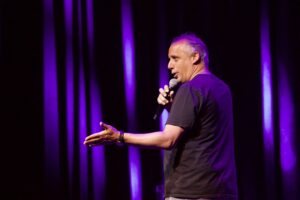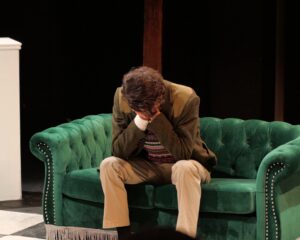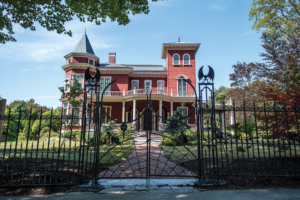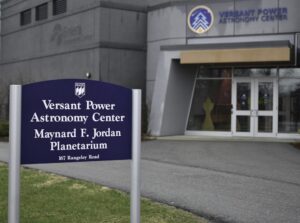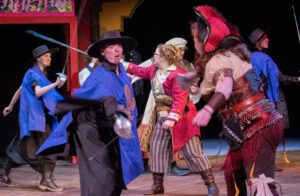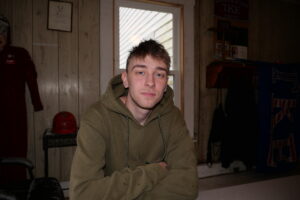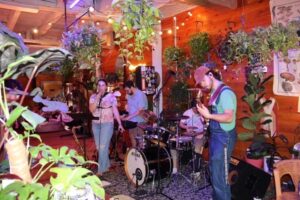The University of Maine’s Midden Minder program, which has recently secured more funding, is garnering public support through talks along the seacoast. These shell midden deposits are studied by the university to discover information about the history of Maine’s coast. The project is headed by geoarchaeologist Dr. Alice Kelley of the school of earth sciences, and Dr. Bonnie Newsom, an Indigenous archaeologist and professor of anthropology.
The project has taken an interdisciplinary approach, engaging many different departments on campus to help with the effort, including Professor Kristin Schild of the Climate Change Institute, the advanced computing group, the new media department and several others. The research project has put forth a citizen science initiative to involve community members in shell midden documentation.
Shell middens are prevalent all along Maine’s coast and are identified by a large deposit of mollusk shells at the water’s edge. They are of Indigenous creation and date anywhere from five thousand years ago up until the European contact period. Some artifacts of European origin have even been discovered mixed amongst the shells, suggesting trade, cohabitation or reuse.
Many theories have been speculated surrounding their purpose. At one point in time, they were naively thought to be Indigenous trash heaps. This interpretation led to much wanton destruction of middens by arrowhead hunters throughout the twentieth century.
Nowadays, there are a few working theories, but ultimately the more data that is gathered the better the middens can be understood.
“They likely played various roles in Wabanaki society and we are just beginning to explore how they fit into people’s lives,” said Newsom. “Our understanding of the social role of the shell heaps themselves is in its infancy here in Maine..
Middens also play a critical role in reconstructing environments and animals of the past. Newsom suggests that they preserve materials that aren’t preserved in other non-shell sites like bone from food, discard or plant remains.
“Features like fire hearths are sometimes encountered in shell heaps which are data rich as the charcoal can be radiocarbon dated,” said Newsom.
Included in some middens are items related to Wabanaki material culture such as ceramics, bone, stone tools and beads. All this information helps bring into view a clearer picture of the past.
The project was initiated back in 2016 by Kelley with the help of Newsom, whose first work in the field was with shell middens with her husband Joseph Kelley, a coastal geologist. They had heard of the middens through Dr. David Sanger, professor emeritus, whose archaeological findings laid the groundwork for the project and saw the need for documentation before it was too late.
The middens face unique challenges due to their positioning along the coast, as coastal erosion and development have destroyed many. With over 2,000 middens in Maine, and so few professional geologists in the state, tackling the immense undertaking of documenting all of them would’ve been nearly impossible. Kelley and the team needed a different approach.
“It’s all about getting eyes on the ground recording data that might be useful for the future, because we can’t get it back,” said Kelley. “We realized we can’t look at them from a strictly academic level, so we’ll move forward with a community science project.”
By asking local communities to be midden minders, they’ve managed to cover much more ground, and with a good framework for collection, achieve accurate data at the same time.
“We’ve been focusing on communities and conservation groups because local people all know where these things are, we’re not hiding it from them,” said Kelley. “They tend to feel a sense of ownership and protection.”
One of the problems that plagues potential midden minders in the quest for accurate measurements and documentation is access. In Maine, cultural resources such as the middens are not protected by law, which, while unfortunate for the archaeological record, puts landowners in a good position.
In order to document a midden, you have to fill out a couple forms: a form to submit to the landowner asking for their permission to access the midden and another to be sent to the UMaine team. According to Kelley, the team is committed to guiding people through the process of documenting a midden individually.
There is no excavation that needs to be done, and landowners can still do what they want with the land. This tends to be a common misconception.
“Many think having an archaeological site on your property will somehow mean you’ll lose access to your land but this isn’t the case in Maine,” said Kelley. “We’re not asking to take the artifact, we’re simply asking people to share that information so that it is not lost forever.”
As for what’s next, the project continues to explore new avenues for documentation. Schild has been helping the group in the realm of geomatics, recently employing the use of drones to conduct 3D imaging of middens, which can be georeferenced and then overlaid with an updated 3D image of the same site to show erosion.
All the new developments in equipment technology certainly have the team excited, but perhaps what they are most passionate about is being able to give the data back to the Indigenous and academic communities.
Newsom, who is an Indigenous archaeologist, has a personal connection to the sites.
“I view shell heaps as gifts from our ancestors,” said Newsom. “For Indigenous peoples, most of our history is encapsulated in subsurface spaces so for me, this is history that I can learn from and that can help me to understand my ancestral past. Indigenous historic properties are often marginalized socially. For me, working to change that is very satisfying.”
Newsom has been developing a series of webinars for Wabanaki communities to help educate them on the cultural significance of the middens, as well as the threats posed to them in hopes of eliciting feedback that can guide or be incorporated into future research.
With the backing of state archaeologist Dr. Arthur Spiess, and a new round of grant proposals being processed, the Midden Minder Project staff is optimistic about the future. Hopefully with more funding and time, the program will continue to grow. The staff has been hard at work doing outreach and getting the word out, and the results have reflected it.
At the last community forum in Surry, the turnout was higher than anticipated.
“I think people are becoming more open minded,” said Kelley. “They’re recognizing that Indigenous history is part of our history.”
The Midden Minders will hold a talk at the annual basket weavers fair at the Hudson Museum in December.
If you know anyone who has a shell midden on their property and would be open to having it documented, contact middenminders@maine.edu.
For more information on the Midden Minder Project, visit umaine.edu/middenminders.
